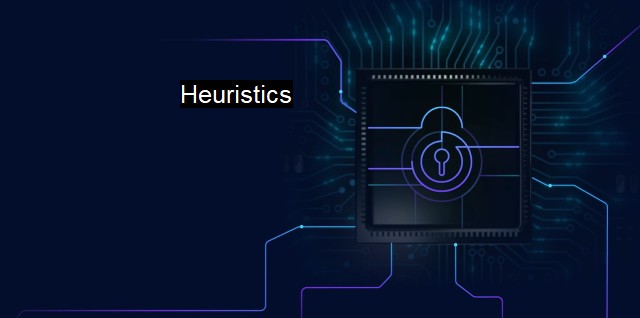What are Heuristics?
Exploring Heuristics in Cybersecurity: The Imperative Role in Detecting Unknown Threats
Heuristics, otherwise referred to as heuristic analysis, is the problem-solving method employed in cybersecurity that prioritizes deductions from existing knowledge rather than exploring alternatives or engaging in simulation scenarios. The efficient and effective methodology emphasizes the significance of previous experience; recurring patterns and inherent intuition serve to anticipate outcomes. Heuristics primarily capitalizes on 'rule-of-thumb' predictions, enables faster decision-making procedures and circumvents resource-consuming systematic approaches.One of the key factors to comprehend heuristic analysis is its dependence on broader patterns. As it facilitates predictions without comprehensive detail, falsely identifying harmless files as harmful (false positives) or detection of the frequent occurrence of malware-infected files storing different traits are potential weaknesses. Advanced heuristic analysis techniques address these discrepancies by concentrating on specific file traits frequently used in malware, such as file manipulation or execution of scripts.
In the context of antivirus and cybersecurity, heuristic analysis is a key player in addressing novel threats that standard virus definition policies could not contain. It must be noted that virus definitions comprise pieces of coding specific to malware and other threats; if a software spots it, the software recognizes it as a threat. Traditional definition-based methods are notably advantageous when dealing with specific traits, but with drastic technological advancements leading to prioritization of fluid and ever-evolving digital spaces for malicious intent, heuristic analysis becomes critical.
Heuristics is often utilized as an advanced method of proactive detection. Given the consistent challenge posed by freshly minted viruses that lack prevalent detection, heuristics capitalizes on conjecture methodologies to illuminate, discern and rectify these threats, eradicating them prior to causing damage. Heuristics draws upon predictive modeling to anticipate potential cybersecurity threats that have alterable traits that could potentially slip past traditional antivirus software undetected.
Artificial intelligence, with its inherent flexibility, computational power, and predictive accuracy, has integrated itself into modern heuristic analysis. Machine learning, alongside device learning, delivers actionable insights for heuristic analysis as these predictions are based upon repositories of previous experience towards specific patterns. Antivirus software today relies upon these predictors to anticipate and respond to metamorphic viruses that disguise themselves to slip past less proficient screening processes.
Despite its tremendous capabilities, heuristics cannot ensure profound, faultless defense. It significantly contributes to stiffening the defense against cyber threats but fosters steep susceptibility to false positives and negatives. Therefore, maintaining a balanced approach by leveraging techniques that cater to specific situations becomes imperative. Allying signature-based detection with heuristics turns out to be a pragmatic approach by which base-level threats catered by signature detection, and newer, unfamiliar invasions are better handled by heuristic methods.
Heuristics holds an unavoidable foothold among the array of methodologies deployed to meet the challenges rampant in cybersecurity. The diligence exhibited by heuristic algorithms in anticipating, analyzing and acting against actions with harmful consequences makes it an instrumental ally in the floating battlefield between secure systems and malicious entities. The notion of heuristic analysis harbors an elevated state of awareness, readiness, and anticipation to storm the evasion tricks played by cyber threats. To assure robust cybersecurity in systems or networks, the security solutions deployed are strongly suggested to incorporate heuristic methodologies fluidly, remolding the architecture in grave times of unforeseen digital invasions.

Heuristics FAQs
What are heuristics in the context of cybersecurity and antivirus?
Heuristics are techniques used by antivirus software to detect and isolate potential malware by analyzing the behavior of files or programs on a system.How do heuristics differ from traditional signature-based virus detection?
Traditional signature-based methods rely on a database of known virus signatures, while heuristics use pattern recognition and behavioral analysis to identify suspicious activities that may indicate the presence of a previously unknown virus.Are heuristics always reliable in identifying potential malware?
No, heuristics can sometimes produce false positives or false negatives, which can result in legitimate files or programs being flagged as a threat or malware being missed.Can heuristics be updated to improve the accuracy of virus detection?
Yes, antivirus software companies regularly update their heuristics algorithms to enhance their ability to detect and isolate new and evolving threats.| | A | | | B | | | C | | | D | | | E | | | F | | | G | | | H | | | I | | | J | | | K | | | L | | | M | |
| | N | | | O | | | P | | | Q | | | R | | | S | | | T | | | U | | | V | | | W | | | X | | | Y | | | Z | |
| | 1 | | | 2 | | | 3 | | | 4 | | | 7 | | | 8 | | |||||||